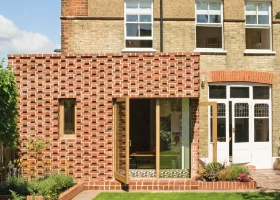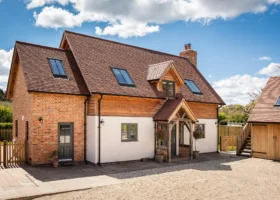
Learn from the experts with our online training course!
Use the code BUILD for 20% off
Learn from the experts with our online training course!
Use the code BUILD for 20% offA 10-year structural warranty offers vital protection against defects and problems in new build homes, but did you know that not all of these insurance products are designed the same way?
Instead, they reflect the development route being followed and the needs of the first and subsequent homeowners. Self builders are both the builder and the homeowner which, in the structural warranty world, immediately makes you unique.
Most people are familiar with the concept of buying a new home from a developer or builder, and benefiting from a 10-year new home warranty as part of this. In this type of transaction, the builder will be registered with the warranty provider and will then gift the first purchaser a 10-year structural warranty with the property.
Under this scenario, the builder will be bound to investigate and remediate defects arising in the home during the first two years. It’s a bit like a manufacturer’s warranty, really. Importantly, during this defect period, the warranty company provides additional insurance cover to protect the homeowner in the event the developer fails to meet their obligations. That same insurance then continues in years three to 10 to provide direct cover to the homeowner for defects that may arise.
To protect the resilience of this type of product, the warranty supplier must put onerous legal and financial securities in place that will ensure the builder meets their obligations. This creates a recourse opportunity, so that the warranty provider can recoup its costs if it has to step in during the defects period.
Self builders need to avoid structural warranties with a defect period. A high percentage of structural warranty claims occur in the first two years, and as you’re directly commissioning the build, a standard new home warranty would make you responsible for issues in that timeframe.
If you’re building your own dream home, you’re almost certainly putting your life savings into the project. So, you’re highly unlikely to have the financial resources in place to rebuild a property which has been the subject of a major defect. Nor are you going to want to be bound by the significant onerous legal instruments outlined above.
This is where the uniqueness of a self build warranty comes in to its own. The policy is designed to give you as builder and first homeowner insurance cover from the date of practical completion. Importantly, it does not have a defects period, so it provides cover from day one de-risking the financial implications of a major defect.
Yes! One example is around the community infrastructure level (CIL), which is a charge on new development that can run to the £10,000s. Around 10 years ago, the National Custom and Self Build Association (NaCSBA) secured a CIL charge exemption from the government for genuine owner-occupied self build projects.
A self build warranty carries a clause which states that, as the self builder, you must live in the property for at least 12 months before it can be transferred (sold) to a successor in title. It is for this reason that a self build warranty was deemed one of the instruments with which you can demonstrate that your project is CIL exempt.
Protek frequently receives frantic calls from self builders who have finished their builds with the benefit of just a PCC certificate (see below), looking to obtain a self build warranty retrospectively to avoid paying CIL charges.
Previously known as an architect’s certificate, a six-year PCC is nothing like a structural warranty. It is simply an extension to the consultant’s professional indemnity insurance. So, your ability to claim relies totally on you demonstrating that they were negligent for not picking up a problem during the build which later manifested into a defect. Proving negligence is not easy and can often result in costly legal battles, which will bring unwelcome extra stress if you are experiencing serious problems with your new home.
In contrast, with a self build warranty, whether or not a defect was actually picked up during the works is irrelevant. Once the cover is issued, you are able to make a claim if you are experiencing problems with the build which are related to an insured defect.
This is incredibly important when you consider the implications of selling your home further down the line. A self build warranty provides cover for successors in title. So, if you sell the property, the warranty is automatically transferred to the new owners, meaning they can also claim on the policy and not pursue you as the builder.
| Simon Middleton is managing director at Protek. He has been underwriting site insurance and structural warranties for over 26 years. Call 0333 456 8030 or visit Proteks’s website for more information. |

